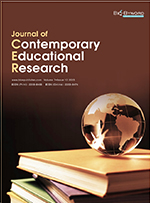Abstract
The primary objective of this study is to apply the Evaluation Grid Method (EGM) and the continuous fuzzy Kano quality model to explore the cognitive preferences of Taiwan residents regarding the beauty of Taiwan’s landscape paintings. The aim is to contribute to the development of social and cultural art and promote the widespread appeal of art products. Through a literature review, consultations with aesthetic experts, and the application of Miryoku Engineering’s EGM, this paper consolidates the factors that contribute to the attractiveness of painting art products among Taiwan residents, taking into account various aesthetic qualities. Simultaneously, the paper introduces the use of the triangular fuzzy golden ratio scale semantics, specifically the equal-ratio aesthetic scale semantics, as a replacement for the traditional subjective consciousness model. Departing from the traditional discrete Kano model that employs the mode as the standard for evaluating quality, this study applies triangular fuzzy numbers to the continuous Kano quality model to analyze the diverse preferences and evaluation standards of the public. The hope is that this research methodology will not only deepen Taiwan residents’ understanding and aesthetic literacy of painting art but also serve as a reference for the popularization of art products.
References
Ye L, 1993, Modern Aesthetic System, Shulin Publishing Company, Taipei.
You W-W, 2010, Exploring the Improvement of Restoration Benefits from the Perspective of Natural Aesthetics, thesis, National Taiwan University.
Lin C-H, 1996, Visual Art and Modeling, Art Book Publishing Co., Ltd., Taipei.
Zhu P, 2010, Selected Edition. Lin Fengmian on Art, Shanghai Painting and Calligraphy Publishing House, Shanghai, 21.
Wu K-H, 2017, A Study of Scale Construction and Situation of Aesthetic Literacy. Psychological Testing, 64(2): 131–154.
Zadeh LA, 1975. Fuzzy Logic and Approximate Reasoning. Synthese, 30: 407–428. https://doi.org/10.1007/BF00485052
Teng J-Y, Tzeng G-H, 1998, Transportation Investment Project Selection Using Fuzzy Multiobjective Programming. Fuzzy Sets and Systems, 96(3): 259–280. https://doi.org/10.1016/S0165-0114(96)00330-2
Zimmermann H-J, 1991, Fuzzy Set Theory and Its Applications, Kluwer Academic Publishers, Boston.
Kano N, Seraku N, Takahashi F, et al., 1984, Attractive Quality and Must-Be Quality. Journal of the Japanese Society for Quality Control, 14(2): 147–156.
Herzberg F, Mausner B, Snyderman B, 1959, The Motivation to Work, 2nd Edition, John Wiley & Sons, New York.
DuMouchel W, 1993, Thoughts on Graphical and Continuous Analysis, Center for Quality of Management Journal, 2(4): 20–22.
